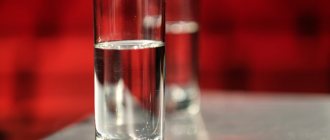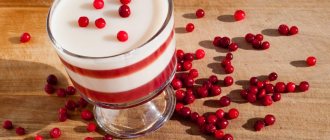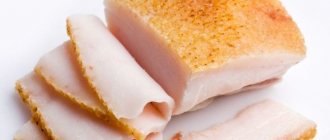A newborn baby happily sucks a breast or a bottle, regularly satisfies his natural needs, and develops according to his age. Everything seems to be in order, but almost every mother has many variants of situations: “Are we doing everything right?” One of these issues is the problem with the “thirst” of the baby. Is it possible to give water to newborn babies, and does he need additional liquid, especially in the hot season?
To give or not to give: two points of view on one question
Some experts believe that babies receiving formula and breast milk do not need water. After all, breast milk already consists of 90% water, and in addition, during the preparation process, mothers dilute the artificial formula with a sufficient amount of liquid. On the other hand, many pediatricians believe that all babies should be offered water, regardless of what type of feeding they are on, explaining this as a means of preventing increased intracranial pressure, dehydration and constipation. Some pediatricians have concluded that babies may confuse hunger with thirst. And if, instead of satisfying it, the child is fed only breast milk or formula by feeding him on demand, you can provoke the appearance of excess body weight. There is a way out of this situation. If, after feeding a standard portion, after a while the child begins to become restless and capricious, as if he wants to eat again, you can offer him some water. In most cases, he will calm down quickly after this. However, parents need to know that water is given only after a meal (about 40 minutes), and not before it, since in this case the child may experience a feeling of false satiety.
Up to contents
How much water does a bottle-fed baby need?
First of all, focus on the baby’s wishes. Offer him water, and he will decide for himself whether he wants to drink or not. Do not force him to drink water under any circumstances!
When it’s hot outside or stuffy in the room, you can give the child water more often, even once every 20-30 minutes will be normal in this case. And in cold weather (less than 20 degrees at home), the baby is unlikely to want to drink at all; most likely, the liquid received with the mixture will be enough for him. In comfortable rooms with a temperature of 24 degrees Celsius, you should give your child about 60-100 milliliters of water per day. But even here there is no clear pattern. The child’s desire, climatic conditions, and the density of the mixture used also influence.
There are always children who really like or don’t like water at all. Take into account the fact that the baby's stomach capacity is small, it is only about 250 milliliters. That's why the more water there is in it, the less space there will be for the mixture. So for some time before feeding it is better not to give the baby anything to drink. Listen to children's needs, and then there will be no problems with supplementation!
When should you give water?
There are a number of situations when giving water to your baby is simply necessary.
- At elevated body temperature
. It can be caused by various reasons: exposure to the open sun, an illness that causes fever, etc. To prevent dehydration, the child needs to be offered water. In this case, breast milk and artificial formula will not be able to completely replenish fluid loss. - For diarrhea or vomiting.
These conditions also cause dehydration. In addition, a sick child may lose appetite and refuse to eat. In this case, the newborn or older child must be given water to drink.
Up to contents
What to buy
Use bottles with wide necks, protective caps, and individual nipples with small holes. You will need 4-6 bottles (125 and 250 ml volume), 4-6 spare bottle nipples, a sterilizer, a brush for washing, and a thermos for storage. Now there are convenient thermal containers that can hold 1-2 bottles. One package of dry formula (400-450 g) is usually enough to prepare 3-4 liters of baby food. In the first six months, the baby needs (approximately) 45 packages of formula.
How to give your baby water
Most mothers prefer to give water from a bottle. But it happens that the baby does not suck it very well. Of course, you shouldn’t force your baby to drink, but if there is a serious threat of dehydration, it is still necessary to replenish the volume of lost fluid. Then you can try giving water from a spoon or making an unsaturated compote from dried fruits (apples and prunes), which will not only be tasty, but also healthy. The main thing is not to add sugar or syrup to it. In addition, this drink has a mild laxative effect, so it is especially useful for constipation.
Up to contents
Raw, boiled or from a bottle
When introducing water into a child’s diet, many parents think about what is best to give their child: boiled or raw?
Which one would you pour for yourself? That's right, clean, tasty and healthy. Fortunately, it’s the 21st century and there are no problems with quality drinking. The ideal solution if you decide to give your baby something to drink is to buy clean drinking water specifically for children, for example, Agusha or Fruto-Nyanya. There is no need to boil it (although I know parents who did). Boiled water is dead water; it lacks all useful microelements. You can also give your child raw tap water, but only if the house has a very good purification system for removing heavy metal salts, impurities and other harmful substances. The most important rule: if you do boil water, don't do it twice. Its shelf life is one day. Remember to give water at room temperature. It will be as comfortable as possible for the baby. If you think that water is the best thing that can be offered to a child as an alternative to mother's breast, remember that the best is the enemy of the good.
When and how to supplement
The child's stomach is small, and immediately after eating he will not be able to drink enough liquid. Therefore, water is offered an hour after feeding.
For babies feeding on breast milk, it is given only from a spoon or from a syringe without a needle, and for older children - from a sippy cup. Using a bottle with a pacifier is unacceptable, as breast refusal may occur. After all, you can suck from it without much effort.
At what age is it possible?
Of course, all of the above applies to infants until they are introduced to complementary foods. The type of feeding influences how many months to start it.
- For breastfed babies - no earlier than 6 months,
- On mixed - a little later,
- On an artificial one - a little earlier than this period.
With the introduction of complementary foods, it is necessary to teach the child to drink water. Offer often, in small portions, from time to time. And the child will take on this healthy habit. As doctors say, it is especially important to teach a child to drink water during illness, this promotes recovery. But, without fanaticism, of course.
Is it necessary to supplement the artificial ones?
Modern doctors believe that when feeding a child with a highly adapted formula, there is no need to supplement with water. There are outdated opinions that it is necessary to supplement artificial drinks, because the mixture is a heavy, filling product. This applies to older mixtures that were not of high quality. Or to unadapted mixtures, still used in some places - in fact, they are cow's milk diluted with a decoction of cereal flour with the addition of sugar syrup. Now the compositions of mixtures are more advanced in quality. After three months, a child on IV can be offered clean water at will - if he doesn’t drink, it means he doesn’t want to. It is also recommended to monitor your stool: if prolonged constipation and dry skin are characteristic, additional supplementation may be required. If the patient's stool is normal (mush), supplementation is not necessary.
Types of mixtures
Formulas can be maximally adapted and partially adapted; now the latter are used less and less, but for some children they are suitable for specific reasons, sometimes unclear to science. Still, you need to try to use highly adapted formulas (labeled “from scratch” or “from birth”), and not cheaper “partial” ones: by saving on formula, you are not fighting capitalist usurpers, but saving on the child’s health in the literal sense. Mixtures are also available in fresh and fermented milk varieties. In fermented milk, the protein is in a curdled state, and they are removed from the stomach more slowly than fresh milk. The lactic acid that accumulates during curdling helps to increase the secretory activity of the gastrointestinal tract. Therefore, acidic mixtures are easier to digest. The volume of fermented milk mixture in the diet should not exceed 50% of the total volume of the milk mixture, one way or another it irritates the gastric mucosa. Mixtures are also divided into dry and liquid, dry ones last longer and are cheaper, and liquid ones do not need to be specially prepared.
What's inside?
(source: guidelines from the Scientific Research Institute of Nutrition of the Russian Academy of Medical Sciences on the principles and methods of feeding children in the first year of life)
Approximation (adaptation) of the composition of infant formula to the composition of human milk is carried out for all components - protein, fat, carbohydrate, vitamin and mineral. Adaptation of the protein component consists, first of all, in reducing the total protein level (from 2.8 g/100 ml in cow's milk to 1.5-1.8 g/100 ml in the finished mixture), which is more consistent with the protein level in human milk (0.8 -1.2 g/100 ml). Reducing the protein content in human milk substitutes eliminates the adverse effects of excess protein on the nitrogen and mineral metabolism of the infant, the function of the digestive tract and immature kidneys. Another direction of adaptation is the introduction of whey proteins into human milk substitutes, which, unlike casein, which predominates in cow's milk, form a much more tender and easier to digest clot in the child's stomach, and also ensure that the amino acid composition of the mixture is closer to the amino acid composition of human milk .
Most adapted human milk substitutes also contain taurine, a sulfur-containing free (i.e. not included in proteins) amino acid necessary for the construction of the neuroretina and brain of infants, the absorption of fats (the formation of paired bile acids), etc. This amino acid is for children in the first weeks and months of life, especially premature months, are among the irreplaceable.
Adaptation of the fat component includes partial or complete replacement of milk fat with a mixture of natural vegetable oils (sunflower, corn, soybean, coconut, palm, etc.), which can significantly increase the content of essential polyunsaturated fatty acids of the omega-6 families (linoleic, arachidonic acids) in the product ) and omega-3 (linolenic acid, etc.), the level of which in cow's milk is low. To improve the absorption of fat, small amounts of natural emulsifiers (lecithin, mono- and diglycerides) are added to the milk mixture, which promote better emulsification and absorption of fats in the intestinal lumen, as well as carnitine, which improves the oxidation of fatty acids in the cells of the baby’s organs and tissues.
In order to adapt the carbohydrate component of the milk formula, lactose is added to it, the level of which in cow's milk is much lower than in women's milk. Often lactose is combined with a low molecular weight polymer of glucose - dextrin-maltose. Instead of dextrin-maltose, malt extract or various types of molasses containing it, as well as glucose syrup, can be added to the mixture. Finally, modern human milk substitutes contain all the vitamins, mineral salts and microelements (including iron, zinc, copper, iodine, etc.) necessary for the child in adequate and balanced quantities.
Which formulas are suitable for artificial feeding from birth?
Only adapted milk formulas indicating “1st stage” or “from birth”: “NAS” (Switzerland), “Nutrilon” (Holland), “Pre-HIPP”, “HIPP 1” (Austria), “Enfamil 1” (USA) ), "Humana 1" (Germany) and others. After 5-6 months, “subsequent” mixtures are introduced. The protein content and energy value in them is higher, since the needs of the baby in the second half of life have increased. These are: “Nutrilon 2” (Holland), “Frisomel” (Holland), “Gallia 2” (France), “NAN with bifidobacteria from 6 months” (Holland). Often the names contain the number “2” - the designation of the second half of life.
Is it normal for a baby to spit up water?
This phenomenon can occur due to various reasons:
- Breast milk coagulates in the baby's stomach and is separated into curds, whey, which is usually released when regurgitated after feeding several hours later. Outwardly, it is transparent, so it can be easily confused with water.
- Increased salivation in a child. Usually this phenomenon is not considered a pathology and is observed during teething. In this case, the regurgitated liquid is drool that the baby recently swallowed.
- Excessive drinking of water by a child at one time.
Normally, the amount burped by an infant should not exceed 2 teaspoons. If there is a lot of discharge, then perhaps the problem is more serious than those listed. But then additional symptoms of the disease will be observed - bloating, strong smell of urine, prolonged crying, anxiety.
Water is an important component for the normal functioning of the body. Undoubtedly, it must be present in the diet of a child fed formula. It is also given during illness, hot weather, in the presence of dry air in the room and after the introduction of complementary foods.
Views:
4607.










